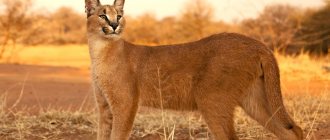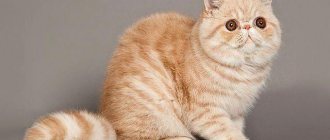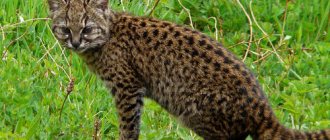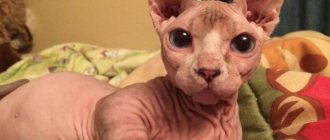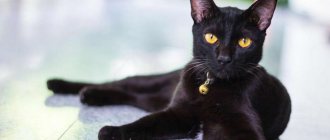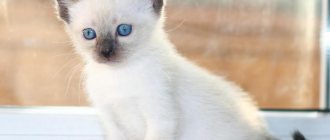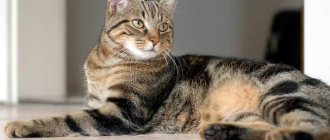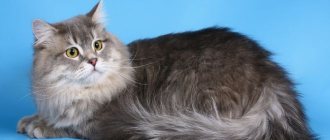The Turkish Angora has won the love of millions of cat lovers around the world. Amazingly soft skin, multi-colored eyes of unearthly beauty, a sense of one’s own greatness in the gaze, coupled with a dog’s loyalty. These are the reviews you can hear about this breed.
In order for an Angora cat to take root in the house and delight its owners with its presence for many years, you need to know everything about the breed: character, care features, congenital defects, as well as breeding features.
Origin story
The Angora cat is descended from the Middle Eastern or wild African cat. In the territory of modern Turkey, these animals were domesticated even earlier than in Egypt. Genetic studies indicate a connection between the Angora and the Turkish Van, both of which originate in Eastern Anatolia.
Over the course of several centuries of existence, the Turkish genotype of cats has undergone natural changes. Mutations led to lengthening of the guard hair, which became a prerequisite for the appearance of the semi-long-haired variety, which later became known as the Angora.
Most often, the name is associated with the Byzantine Angora (modern Ankora), from where cats were brought to England and France in the first half of the 17th century.
Fluffy beauties from Turkey quickly became popular, including in royal houses.
In Europe in the 19th century, all cats brought from the East were called differently depending on which country they came from: Persian, Chinese, Tibetan. They were united under one name “long-haired”.
It turned out that the British cat fanciers wanted to make Persians with even longer and silkier hair, and they began to cross them with Angoras. The Persian breed quickly became popular, but the Angoras were temporarily forgotten. The British were so carried away by the Persians that during their selection, the Angora lost its features.
In the 30s 20th century the development of the species took a new turn when the Turkish government approved a special breeding program. The all-white angora with different eye colors was recognized as a national treasure that needed to be preserved and protected. Cats from all over the country were collected in Istanbul and Ankara for further breeding. Therefore, it is believed that a real Angora cat can only be bought in Turkey.
In 1973, the Turkish Angora was registered with the US Federation. However, only individuals with pure white coat color were recognized. Over time, the popularity of snow-white animals decreased, and breeders began to breed kittens of other shades. After 5 years, the standard began to allow new colors, and in 1987 the description of the Turkish Angora cat was registered in European felinological systems.
Nutrition
Proper nutrition is the key to health, longevity and beautiful appearance of the Angora cat. Felinologists do not give clear recommendations regarding which food is preferable. Here you need to focus on the cat’s preferences and your own capabilities.
You can feed your pet either prepared food or keep it on a natural diet. In the first case, there are no problems, except that a purebred pet needs high-quality food, which is quite expensive.
However, industrial dry and wet food takes into account all the needs of the cat’s body, depending on its age, size, coat length and individual characteristics. High-quality food also contains beneficial vitamins and minerals necessary to maintain health.
It should be taken into account that the active and playful Turkish Angora needs adequate nutrition. The animal should be fed quite often, as it must replenish its energy reserves.
If you decide to feed your cat natural products, then you should prepare the diet correctly. The cat, although small, is a predator, and its nutrition should be based on protein foods, the share of which in the diet is at least 80%. You need to cook for your cat separately, without using salt, spices and other flavoring additives; food from a common table is not suitable for it, moreover, it can cause serious problems with the digestive tract.
The cat's diet should consist of the following products:
- lean varieties of meat, boiled or raw, but scalded with boiling water (it is necessary to grind the meat so that it is convenient for the animal to eat it);
- meat by-products;
- eggs, chicken or quail, can be included in the diet twice a week;
- dairy products: cottage cheese, yogurt (you don’t need to give whole milk to a cat, its gastrointestinal tract is not designed to digest it);
- The plant part of the diet should consist of boiled vegetables and greens (there is no need to feed your pet nightshades or very starchy vegetables).
To maintain health, your cat needs vitamins. To do this, she can be given tableted nutritional supplements. As a rule, they contain substances that attract the cat with smell and taste, so there are no problems giving the animal a tablet: they are simply placed with food.
A good food supplement is fish oil (only intended for cats), seaweed powder, as well as grass (sold in specialized stores directly in pots). The cat’s digestive tract has difficulty digesting flour, grains, and coarse fibers, so there is no need to feed such foods.
Coat colors and features
The quality of the coat is of particular importance; Angora cats are characterized by a coat of medium length, completely devoid of undercoat. The hairs are longer on the neck, tail and panties.
The tone of the Turkish Angora fur coat can be monochrome, as well as two or three colors:
- The tortoiseshell combines a black coat with red and cream spots.
- There are 2 options for the smoky color of Angora cats. The Blue Smoke has a white base coat and blue-gray guard hair, while the nose and paw pads remain gray. In another case, the black tint of the nose, paws and cover is combined with a white base of the hairs.
- Wide variety of striped colors. Tabby shades can be blue, cream, marbled, brindle, patchwork, silver, red, brown.
- Solid colors include blue, cream, red, classic white and black angora.
- Bi-color combines a snow-white shade with any of the primary colors or bluish-cream.
- The Calico has a light base with tan and black markings.
- Bleached chintz suggests a white cover with spots of gray and cream.
The coat of a Turkish cat should not be acromelanic, that is, change tone under the influence of temperature.
The following colors or their combination with white are unacceptable for the Angora breed:
- chocolate;
- cinnamon;
- faun;
- lilac;
- Himalayan.
Origin of the species and description
Photo: Angora rabbit
Ankara tavşanı (Angora rabbit) is a chordate mammal belonging to the hare family. Angora is a whole group of breeds artificially bred by man for decorative purposes and for the sake of beautiful wool.
The first Angora rabbits appeared on the European continent in 1723. Rabbits of this breed were brought from Turkey by sailors who were surprised by the quality of items made from Angora wool and decided to bring these animals to Europe for breeding. According to other sources, Angora rabbits first appeared in France in 1765. Over time, this breed became very popular; rabbits of this breed were brought to the territory of Eurasia. Later, Angora rabbits began to be bred all over the world.
Video: Angora rabbit
The group of Angora rabbit breeds includes the following breeds:
- German Angora rabbit;
- English Angora rabbit;
- French Angora rabbit;
- dwarf downy rabbit;
- atlas and giant.
The distinctive features of Angora rabbits of all breeds are a slightly flattened, almost invisible nose, very long hair, large and long paws invisible under the fur. Angora rabbits have small ears that are slightly rounded at the end; some species also have small tufts on their ears.
Interesting fact: The fur of the Angora rabbit has a tactile sensation when stroked, similar to high-quality silk, for which the wool is highly valued.
Character and habits
Every Angora cat is highly intelligent and has a strong sense of curiosity. From early childhood, the pet learns easily and can even remember simple tricks. Small and adult animals require toys and entertainment, but in limited quantities.
As the Angora gets older, it becomes calmer, a little phlegmatic, preferring the affection of its owner to active activities.
The aristocratic breed loves attention, but will not tolerate bad treatment. Strongly attached to the owner, the cat does not tolerate loneliness well. The Turkish Angora, whose character is characterized by tolerance, gets along well with children. The main thing is to teach kids to have a delicate relationship with a pet.
The Angora breed often experiences jealousy towards other animals, not wanting to share the owner’s attention. It is believed that the habits of the Turkish cat are more reminiscent of a dog, due to its sensitivity to the owner’s mood and strong affection. In general, a non-conflict animal will actively defend its territory from the invasion of strangers. New people in the house will make the Angora wary, but the animal is unlikely to show aggression.
Character of the Turkish Angora
The Turkish cat is distinguished by restraint, high intelligence, and activity. This breed is also affectionate and gets along well with people, children, and other animals living in the apartment. Shyness is not typical for them, they love to spend their time next to their owner. When guests arrive, they may hide in a secluded place for a while, but then they will still go and get acquainted with them.
Angora talkativeness is rare. These cats are attentive and observant. They easily remember how the doors of cabinets, refrigerators and other movements of the owner open, which they then repeat to the best of their physical abilities.
If the owner hid his favorite toy from her, the cat will certainly find it and make every effort to get it back. They are good at capturing the intonations in the voice, the change in mood of a person, especially their loved one.
Turkish breed cat.
Care and maintenance
An Angora cat does not require much effort to care for. Despite the long fur, it is quite easy to take care of it. The smooth coat has no undercoat, so it hardly gets tangled, and also never forms tangles. The use of slicker brushes is not allowed; it is better to use brushes with natural bristles. It is enough to comb the Turkish Angora once a week, which is no different from caring for a short-haired breed. White pets participating in exhibitions require a little more care. Oil-based coat products must be selected correctly to prevent yellowing of the coat.
In addition to brushing, the Turkish Angora cat needs regular bathing. The procedure should be carried out every 2 months, and even more often for snow-white pets. There is no need to feed the cat 4 hours before washing, and protect the ears from moisture while bathing. The water temperature should not fall below 30°C, and it is advisable not to be warmer than the animal’s body. The basin or bathtub is filled to the level of the Angora cat’s belly, and it is recommended to place a towel on the bottom. A fluffy angora must dry naturally in a warm, draft-free room.
The following additional procedures are performed:
- cleaning eyes from discharge;
- nail trimming;
- ear care;
- teeth cleaning.
Feeding
The Turkish Angora cat's diet must be properly balanced to avoid vitamin deficiency or excess weight.
You can create your pet’s diet yourself using:
- boiled meat;
- thermally processed sea fish, deboned;
- cereal porridge on water;
- eggs;
- dairy products;
- boiled vegetables.
It is worth considering that there are a number of ingredients that cause the white angora's coat to turn yellow.
Purebred show cats should not eat:
- offal;
- carrot;
- seaweed.
Premium and super-premium products are recommended for industrial feed.
Health
The Turkish Angora cat is characterized by good health. Good nutrition and comfortable living conditions allow your pet to avoid danger. An annual examination at a veterinary clinic, regular vaccination and deworming are the key to the well-being of the animal.
A serious characteristic that affects health is congenital diseases or a genetic predisposition to them. For a long period, white Turkish Angoras suffered from deafness, but modern breeding has minimized the risk of this pathology. In addition, the cat can get hereditary ataxia, which leads to impaired coordination of movements.
Cardiac activity is affected by a sedentary lifestyle and overweight of the pet, so it is important to choose the right food for your Angora cat. Older animals may suffer from cardiomyopathy or neoplasia.
Diseases and health problems
Angora cats are quite gentle and receptive animals. Despite active attempts by breeders to improve their health, not all ailments can be eliminated. Angoras are characterized by both congenital and acquired diseases.
The most common among them are:
- Deafness. This disease is especially common among white animals. In recent years, thanks to the efforts of felinologists, the percentage of congenital deafness has noticeably decreased;
- Diseases of the musculoskeletal system. The main cause of this type of disease is a lack of nutrients in the diet and poor heredity. Dysplasia and limb dysfunction are the most common;
- Nervous system disorders. The most common disease of the central nervous system is ataxia. It may occur due to damage to the spinal cord or peripheral nerves. The disease affects the motor functions of the body, without in any way affecting the mental abilities of the animal or its life expectancy;
- Diseases of the cardiovascular system. Heart pathology is most often transmitted from parents. Usually it proceeds violently and almost always ends in a shortening of life;
- Urolithiasis. The formation of stones in the urinary tract provokes the disease urolithiasis. This disease is most common among obese animals.
Chronic and congenital diseases must be included in the pet’s medical passport. Acquired diseases are indicated by such signs as: general fatigue, loss of appetite, fever, vomiting, diarrhea, shortness of breath, purulent discharge from the ears/nose. If such symptoms occur, it is recommended to take your animal to the veterinarian. Correctly and timely prescribed therapy will help not only cure the cat, but also prolong its life.
The prevention of any disease is proper nutrition, timely vaccination and regular visits to the veterinarian. A specialist must not only administer seasonal vaccinations, but also conduct tests that can help identify serious illnesses in the early stages.
How long do they live?
Angora cats have a long life.
Thanks to centuries-old natural selection, animals do not have a large number of genetic abnormalities, which significantly affects their overall health. On average, the Turkish Angora can live 15-18 years, although there is information about pets with an age of 20 years.
Breeding
The Turkish Angora is considered a valuable breed for breeding. There are rarely more than four kittens in a litter, which is why well-known breeders have a waiting list for this breed. At the age of one and a half, you can already start breeding cats to produce offspring.
How much does a Turkish Angora cost? The price varies depending on the characteristics of the kittens themselves. Non-exhibition copies cost from 7-8 thousand rubles. They make excellent pets, but are not suitable for professional breeding.
The average price of a purebred cat is 10-15 thousand rubles. It depends on the qualities of the kitten, its prospects and the awards of its parents.
Elite class kittens from recognized champions cost from 25 thousand rubles and above.
Incredibly beautiful, graceful and playful cats have long won the hearts of breeders. Their natural aristocracy is admirable. The Turkish Angora is rightly called the royal cat. Such a pet will not leave anyone indifferent.
Nurseries
In Russia, the Turkish Angora cat is not very widespread. There are not so many registered nurseries that breed the breed:
- "Akkedi" is located in Moscow. Every year the breeder offers kittens of different colors. https://akkedi.ru
- Catlar is located in the Moscow region and offers a large selection of fluffy Turkish Angoras.
- In Chelyabinsk, kittens can be found at Chaton Solaire; other cat breeds are also bred there.
- Babies can also be found in the White Lotus nursery in Yekaterinburg.
Video
* We invite you to watch a video about the Angora cat . In fact, in front of you is a playlist in which you can select and watch any of 20 videos about a given cat breed by simply clicking on the button in the upper right corner of the window. In addition, the material contains quite a lot of photos. By looking at them you can find out what an Angora cat looks like.
Rate the material!
[Total votes: 1 Average: 5]
The Angora cat or Turkish Angora is a pet bred by breeders and officially included in felinological works in the mid-20th century. Representatives of this breed are particularly elegant, neat and flexible. Animals are very curious and train well. Thanks to these qualities, Angora cats are very popular among cat lovers all over the world.
How to choose a kitten
Turkish Angora kittens must be 12-15 weeks old to go to a new home. During this period, babies are able to eat independently, are trained to the tray and vaccinated. When white animals reach 1.5 months, it becomes possible to determine the presence or absence of congenital deafness. A healthy Angora kitten is playful, active, and moderately curious. The baby's belly should be soft and his overall appearance should be well-fed.
Without accurate pedigree or kennel information, the animal should be selected with the help of a breed specialist. A kitten that looks like an angora may turn out to be a Turkish shorthair, Anatolian, Van cat or Angora chinchilla, or even a half-breed.
Where does the Angora rabbit live?
Photo: Angora rabbit in Russia
The Angora rabbit is a species artificially bred by breeders for decorative purposes and for breeding animals in captivity; therefore, Angora rabbits cannot be found in the wild. This breed is especially widespread today in China, where the production of fluff from Angora rabbits reaches 8,000 tons per year! These rabbits are also especially popular in the Czech Republic, England, Poland, Hungary, France, and Russia. Angora rabbits are very light-loving; when kept in captivity, it is better to place the cage on the sunny side.
Animals have special requirements for comfort. They do not tolerate sudden temperature fluctuations and drafts, so care must be taken to keep the cells warm. Even in a small draft, a recently clipped animal can get sick. In hot weather, it is better to put the cage with the rabbit in a cool place, since Angora rabbits do not tolerate sunlight well. They live shorter lives in open-air cages and get sick more often. The best conditions for keeping in captivity are keeping them in cages or enclosures in a warm, ventilated area. It must be remembered that it is better to keep rabbits in a cage alone or in pairs.
Angora rabbits guard their territory, and if a stranger is introduced into the cage, a serious conflict may arise, including the killing of the new resident. Rabbits are good at figuring out where in the cage there is a place for food, where the tray is. Before giving birth, females build a nest from their own down in the queen cell or other secluded place. There must be a ladder made of inedible material at the bottom of the cage; this will protect the animals’ paws from calluses.
Advantages and disadvantages
The Turkish Angora cat has many advantages:
- developed intelligence and quick wit;
- beautiful palette of colors and eye colors;
- long life expectancy;
- good health and strong immunity;
- loyal character;
- high level of attachment to the owner;
- a good combination of activity and periods of calm;
- tolerance towards children.
Along with the positive qualities, the Turkish Angora cat breed also has disadvantages:
- jealousy and wariness of strangers;
- inability to keep with other pets;
- rejection of loneliness;
- risk of hereditary diseases;
- special care for white animals.
Interesting facts about the breed
The Angora cat is one of the most famous thanks to interesting stories about the breed:
- Angoras came to Scandinavia with the Vikings. It is believed that they became one of the ancestors of the Norwegian forest cat.
- Once in America (Canada), Angoras participated in the formation of the Maine Coon.
- One of the first admirers of the breed in Europe was the famous Cardinal Richelieu.
- In the palaces of the shahs, white fluffy angoras “served” as napkins. After the meal they wiped their hands on them. Due to the lack of undercoat, the animal quickly put its fur in order.
- It was believed that the Prophet Muhammad (in Islam) had odd eyes. Therefore, Angora with different eyes has always been highly valued.
- The only animals allowed into mosques in Turkey were white cats.
- Mustafa Kemal Ataturk, the first president and founder of the Turkish Republic, had different colored eyes. After he liberated the country from the occupation regime, odd-eyed angoras began to be valued even more.
Outwardly majestic and strict, the Angora breed has an excellent character, loyalty and devotion to people. Friendly Turkish cats will not cause problems, and will respond to praise or encouragement with sincere love.
Angora cat - description of the breed
From the history of the origin of Angora cats it becomes clear that these animals have royal roots. This guess is confirmed by the appearance and character of the graceful Angoras. Silky coat of varying lengths (medium and long), expressive eyes, fluffy tail and boundless elegance - this is how you can describe the pets of this breed.
The body of the angora is proportional and neat. Adult animals reach medium (very rarely large) size. Due to their physique, cats move very plastically, jump easily and walk smoothly.
Features of representatives of this breed also include:
- The ears are set high and pointed at the ends and are large in size. They stand out clearly against the background of the pet’s neat small muzzle;
- Almond-shaped eyes are blue, green or yellow. A common deviation from the norm is the different colors of the eyes, due to which the animals acquire an even more mysterious and attractive appearance;
- Silky, thick, iridescent coat. The coat remains in this condition until the pets are very old. These animals belong to the “Semi-longhair” category. The soft and smooth fur of cats makes you want to pet them endlessly. A special feature of the wool is its different lengths. If the fur on the neck is quite short, then on the tail it is as long as possible, due to which the “Ostrich feather” effect is achieved.
As adults, Turkish Angoras reach a weight of 4-6 kg and 3-5 kg (males and cats, respectively). The height at the withers of such animals is 25-30 cm. The average life expectancy is 15 years. However, with proper care this figure increases to 20.
